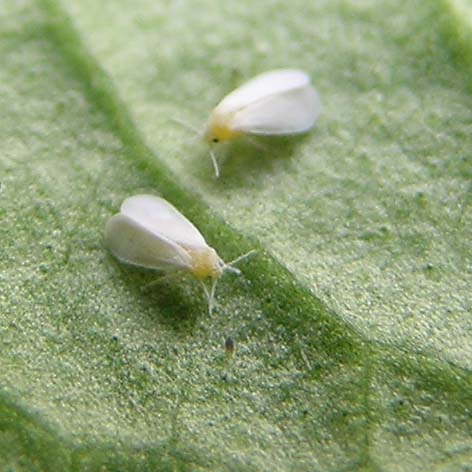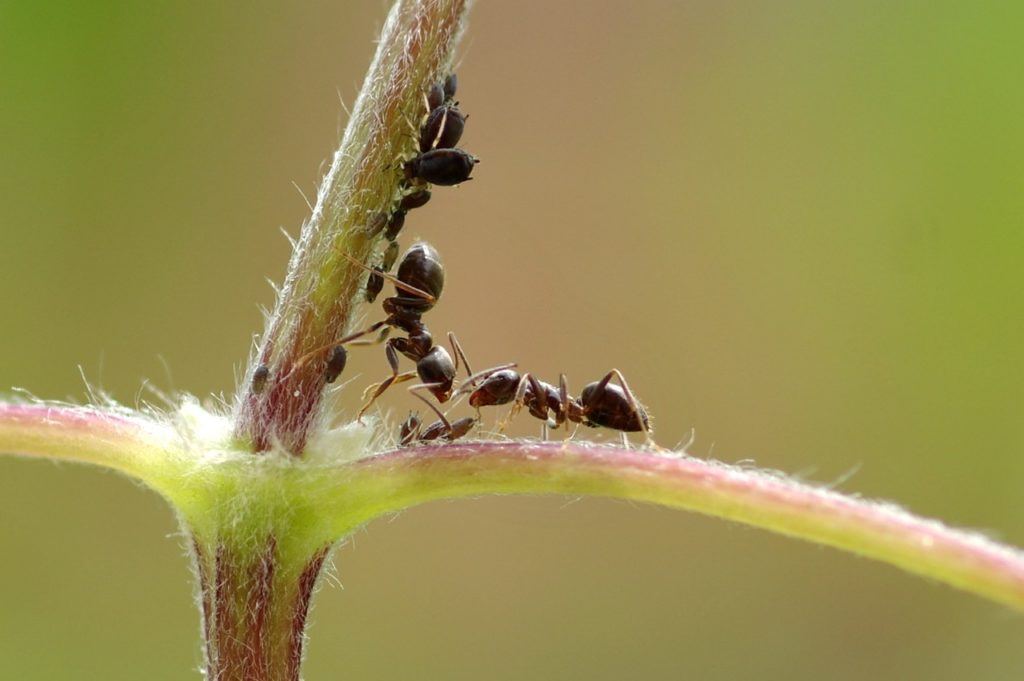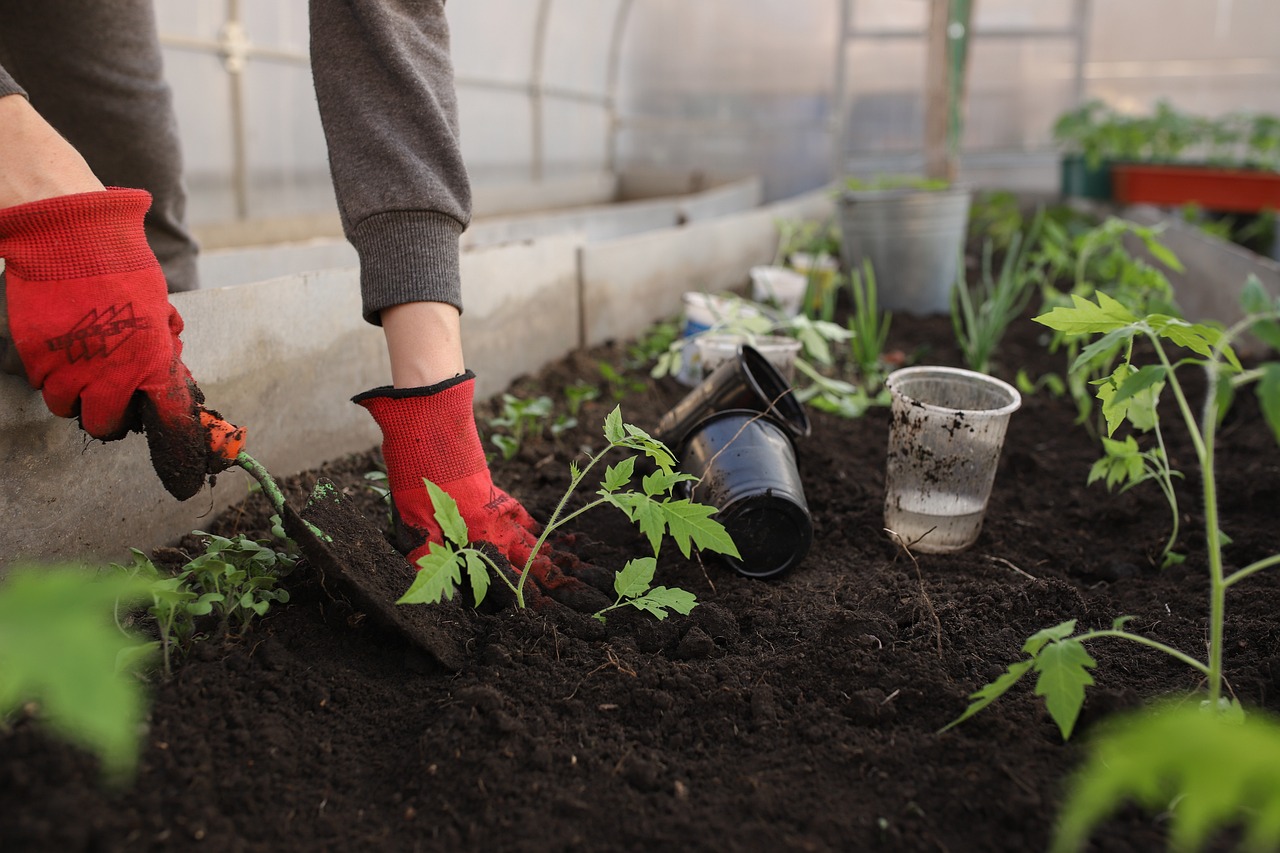Whiteflies can cause different kinds of damage to plants, many of which can even lead to the plants dying. Knowing whitefly damage symptoms is crucial — not just for minimizing damage but also for formulating effective pest control strategies. Here are the biggest whitefly damage symptoms you should know about.
A quick introduction to whiteflies
Whiteflies are small insects that feed on plant sap. They are usually white or yellow, hiding on the undersides of leaves. These garden pests infest a wide variety of plants — from ornamentals to vegetables. Whether you are a commercial gardener or a mere enthusiast, you should watch out for these insects. They can damage and kill your plants.

Whitefly damage symptoms
1. Yellowing of leaves is a major symptom of whitefly damage
Sap is a nutrient-rich fluid that can be found inside plants. It plays a vital role in many processes, such as defense, nutrient transport, photosynthesis, and pressure regulation. And since whiteflies suck the sap out of plants, the plants can’t do these processes efficiently. When plants lack nutrients, they turn yellow. This can also be a symptom of reduced photosynthesis.
2. Leaf dropping and wilting
When whitefly infestations are severe, naturally, they suck more sap out of plants. This can cause leaves to drop prematurely or wilt. The loss of leaves can be very damaging to plants because it can reduce photosynthesis effectiveness. This can then lead to more stress and worse health for the infested plants.
3. Leaf curling
The presence of whiteflies is not good for your plants even if the infestation is not severe. The sap-sucking habit of whiteflies can distort leaves, making them curl, wrinkle, and exhibit abnormal growth patterns. These can compromise leaf structure and reduce leaf size. Because of the smaller leaves, you can expect a reduction in photosynthesis and biomass accumulation. You will see shorter stems, smaller overall plant size, and delayed flowering and fruiting.
4. Honeydew production
Whiteflies have many similarities to aphids because they are both sap-sucking insects. Even the damage they cause to plants is similar. Another similarity they have is their production of honeydew, a sticky substance they secrete. Honeydew is dangerous to your plants because it can attract other pests that can damage your plants further. It can also help in the development of mold, which is another thing that can damage your plants.
5. Mold development
Honeydew is not just sticky, as it is also sugary. Since it serves as a food source for fungi, its presence in whitefly-infested plants creates an ideal environment for sooty mold to develop. The spores of fungi can stick to the honeydew and accumulate into a dark powdery coating on the surface of your plants. This coating can block sunlight or at least reduce the light coming through the plants’ cells. It essentially reduces photosynthesis.
6. Reduced quality and yield
Whitefly damage symptoms can affect yield and its quality, which is very problematic if you are a commercial gardener. The damages can stress plants enough to lower production. And the production quality suffers because whiteflies can also directly damage crops, fruits, and vegetables. This can lead to blemishes, deformities, necrotic areas, and punctures that can negatively affect the market value of the produce. There is also the visual appeal of crops. Consumers generally avoid items that are damaged or not perfect aesthetically.
7. Virus transmission
Whiteflies are vectors of plant viruses. Plant viruses can go inside the body of whiteflies, particularly in their salivary glands. And when whiteflies feed on plant sap, they infect the plants with the viruses. The viruses can then lead to systemic infections and diseases that can damage your plants, stunt their growth, or even kill them. Viruses can significantly reduce crop quality and yield, which is particularly problematic for those in the agricultural sector.
8. Attraction of other pests
Honeydew is an attractor not just of fungi but also of other pests like ants, flies, and wasps. Ants in particular are problematic because they have a mutual relationship with whiteflies. Ants protect whiteflies from predators, and in return, the ants can get honeydew as a food source. Whitefly activity also causes a general weakening of plants, making them more susceptible to plant eaters like caterpillars.

Control whitefly damage by pest control methods
The best way to get rid of whiteflies and minimize whitefly damage symptoms is by combining different whitefly control methods. They can complement each other, ensuring their effectiveness and flexibility to your specific case. Here are methods you can combine:
- Practice proper gardening. Practice proper fertilization and irrigation to maintain your plants’ health. It will make them less vulnerable to whitefly infestations. You can also prune overcrowded plants. This will reduce the space whiteflies can thrive in and even improve the air circulation around your garden. Also, be on the lookout for whitefly damage symptoms, so you can deal with them as soon as possible.
- Buy traps. Many gardening enthusiasts use reflective mulches to deter whiteflies. Reflective surfaces disorient whiteflies, essentially making them protective barriers against the sap-sucking pests. Aluminum foils and reflective silver plastics are popular choices. You can place them around your plants. You can also try sticky traps. They trap adult whiteflies that come in contact with them, effectively reducing adult whitefly populations.
- Try insecticidal oils and soaps. Buy insecticidal soaps or certain essential oils like neem oil to get rid of whiteflies. Follow the instructions on their packaging. If you don’t, they can actually damage your plants, especially young shoots that are vulnerable to the intense potency of these insecticides. Usually, you simply mix the oil or soap with water at a recommended dilution rate and spray the mixture on your plants.
For severe whitefly infestations, you can try chemical insecticides. It’s best to use these as a last resort because of their negative effects on your plants and your garden’s beneficial insects.
Look out for the symptoms of whitefly damage!
Whiteflies are garden pests that suck sap out of your plants. This can be very damaging to your plants because sap helps in a variety of plant processes, especially photosynthesis. With a less efficient photosynthesis process, your plants can be seriously damaged, and they can die.
Unfortunately, whitefly damages are often irreversible. The best thing you can do for your plants is to get rid of the whiteflies bothering them and prevent the pests from coming back.

